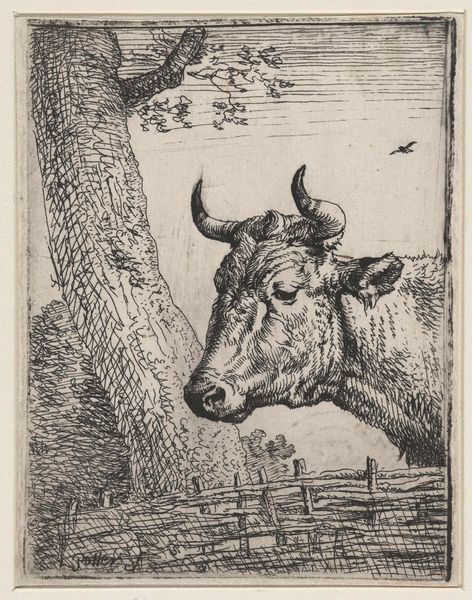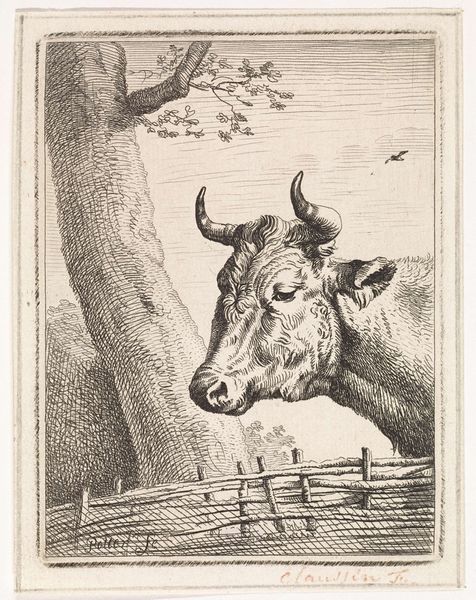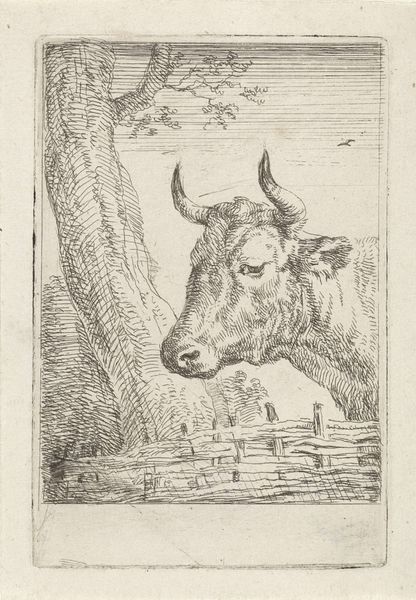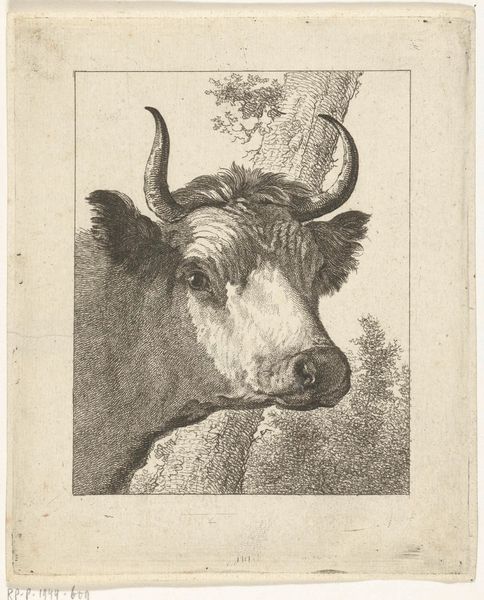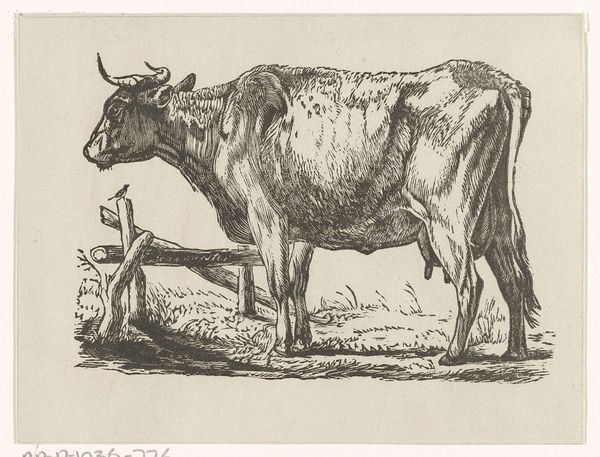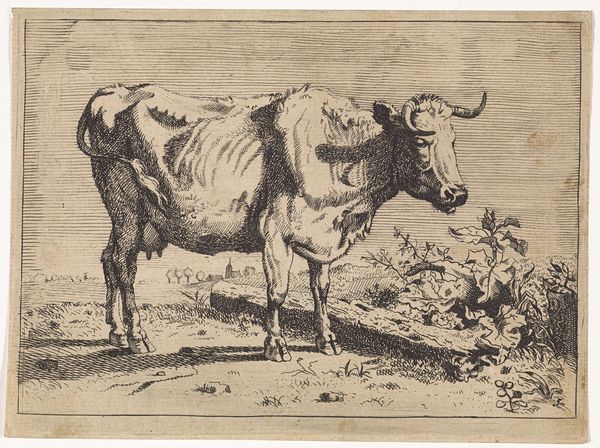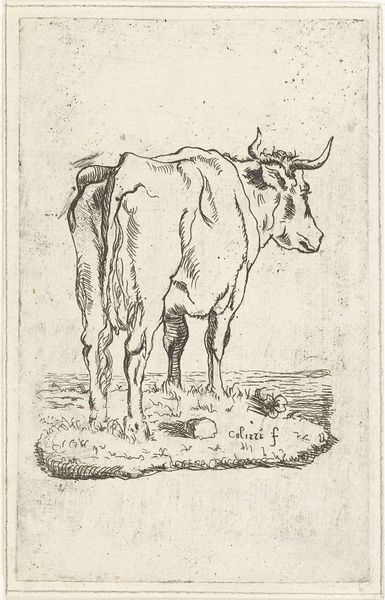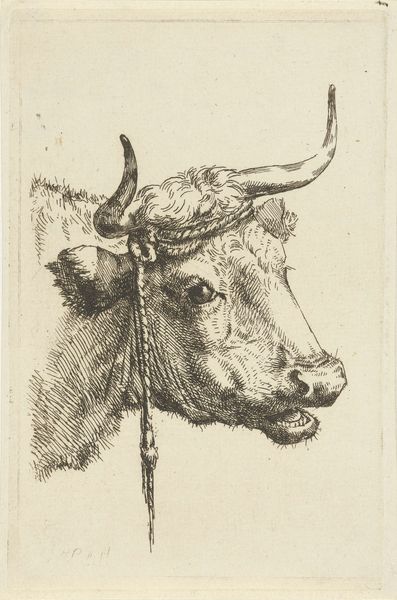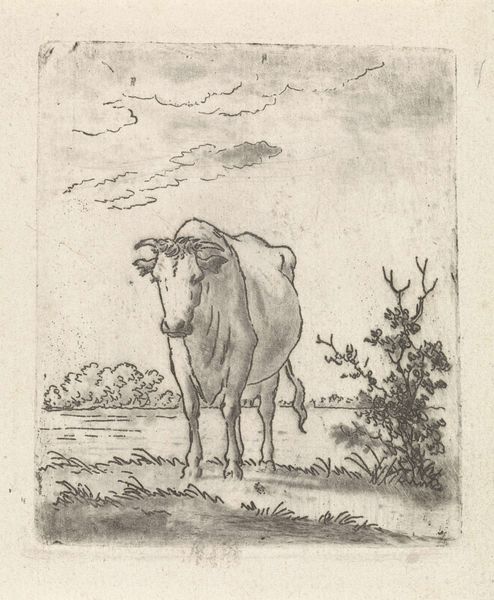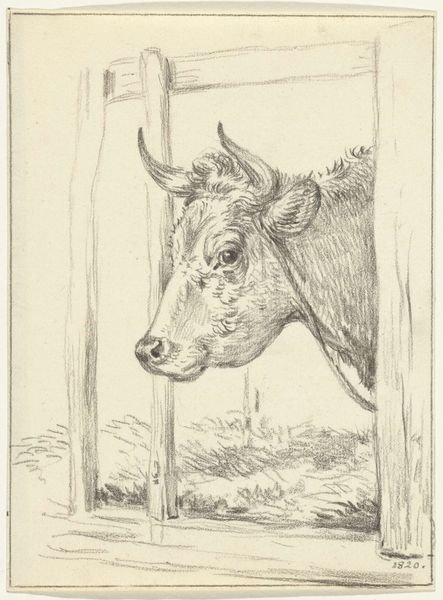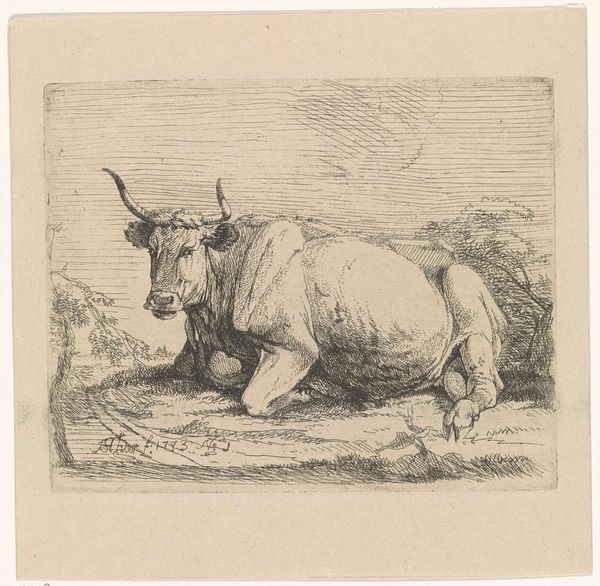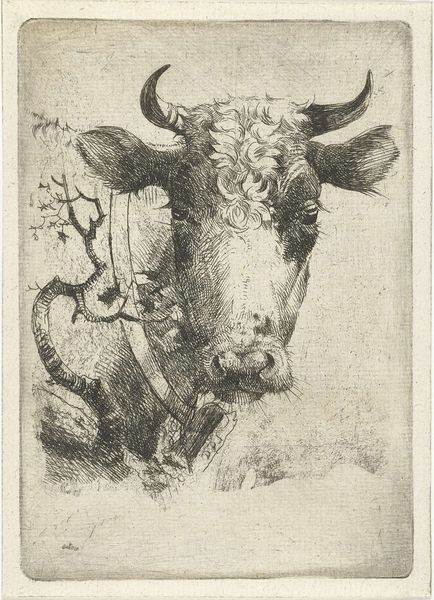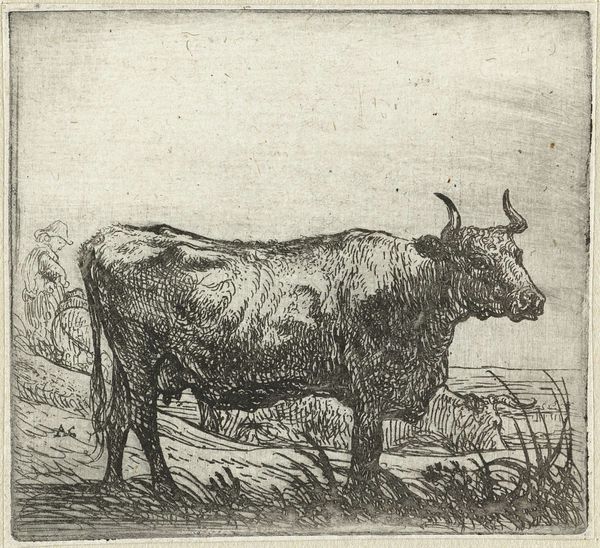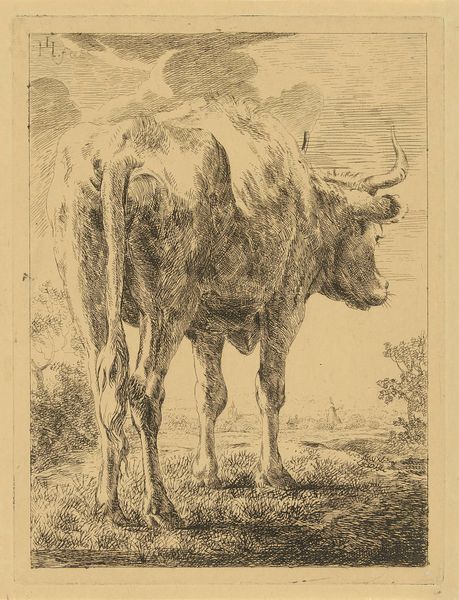
print, etching
# print
#
etching
#
landscape
#
realism
Dimensions: height 99 mm, width 73 mm
Copyright: Rijks Museum: Open Domain
Curator: Here we have “Koeienkop naar links,” or “Cow’s Head Facing Left,” an etching by Joannes Bemme from around 1801. It resides here in the Rijksmuseum. Editor: The mood of this piece is quite serene. I'm drawn in by the detail in the animal’s face and how its imposing size contrasts with the delicate lines of the surrounding landscape. Curator: Well, Bemme created this at a pivotal time, as agricultural practices were transforming and the perception of animals was also in flux. This piece offers a fascinating window into our relationship with labor and the rural at that time. Looking at this etching through the lens of class, gender, and species… What narratives of power can we excavate here? Editor: You're right, it definitely provokes consideration of the human labor intrinsically bound to this image. Consider the labor behind this printmaking process: the sourcing of the copperplate, the preparation, the repetitive and demanding work of etching itself… It all contributes meaning to what's depicted. It’s also striking how the animal looks simultaneously sturdy and almost vulnerable, fenced in by the lines below. Curator: That vulnerability you observe, does it mirror any parallels with societal issues during that era? How does the role of the bovine in 19th century Netherlands intersect with gendered ideas of subservience? Perhaps it’s not as simple as observing animal welfare, but unpacking deeply ingrained systems of control. Editor: Interesting perspective. My focus is more on how this imagery functioned. Were these kinds of prints made as decorative elements, commodities within the rising middle class’ aesthetic consumption? Was it affordable or out of reach? I'd be interested in exploring its social circulation in Dutch society and beyond. The landscape aspect feels especially significant considering land use, resources, and the beginnings of industrialization. Curator: True, that interaction between agriculture, capitalism, and consumption cannot be ignored. Perhaps if we considered gender not just as a cultural construction, but a social relation to nature? What additional meanings and impacts may arise? Editor: So many angles from which to perceive art like this; you begin by discussing ideas of identity, race and politics, and here I sit focusing on process, materiality and consumption. Fascinating. Curator: Yes! In art and life itself, it’s all about challenging perspectives, even our own.
Comments
No comments
Be the first to comment and join the conversation on the ultimate creative platform.
